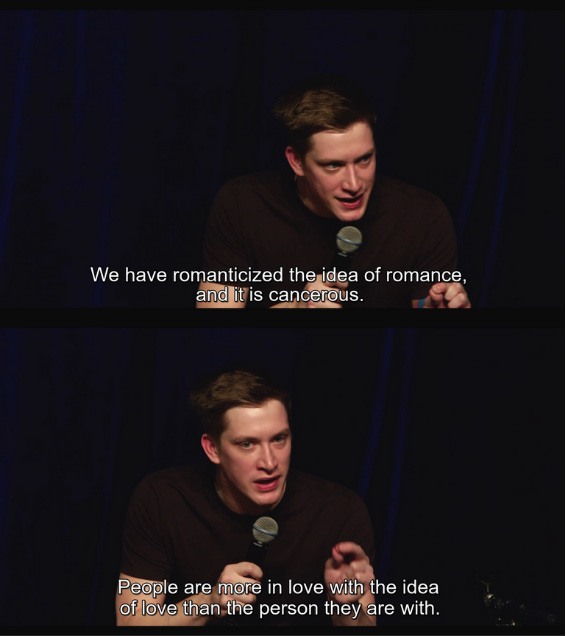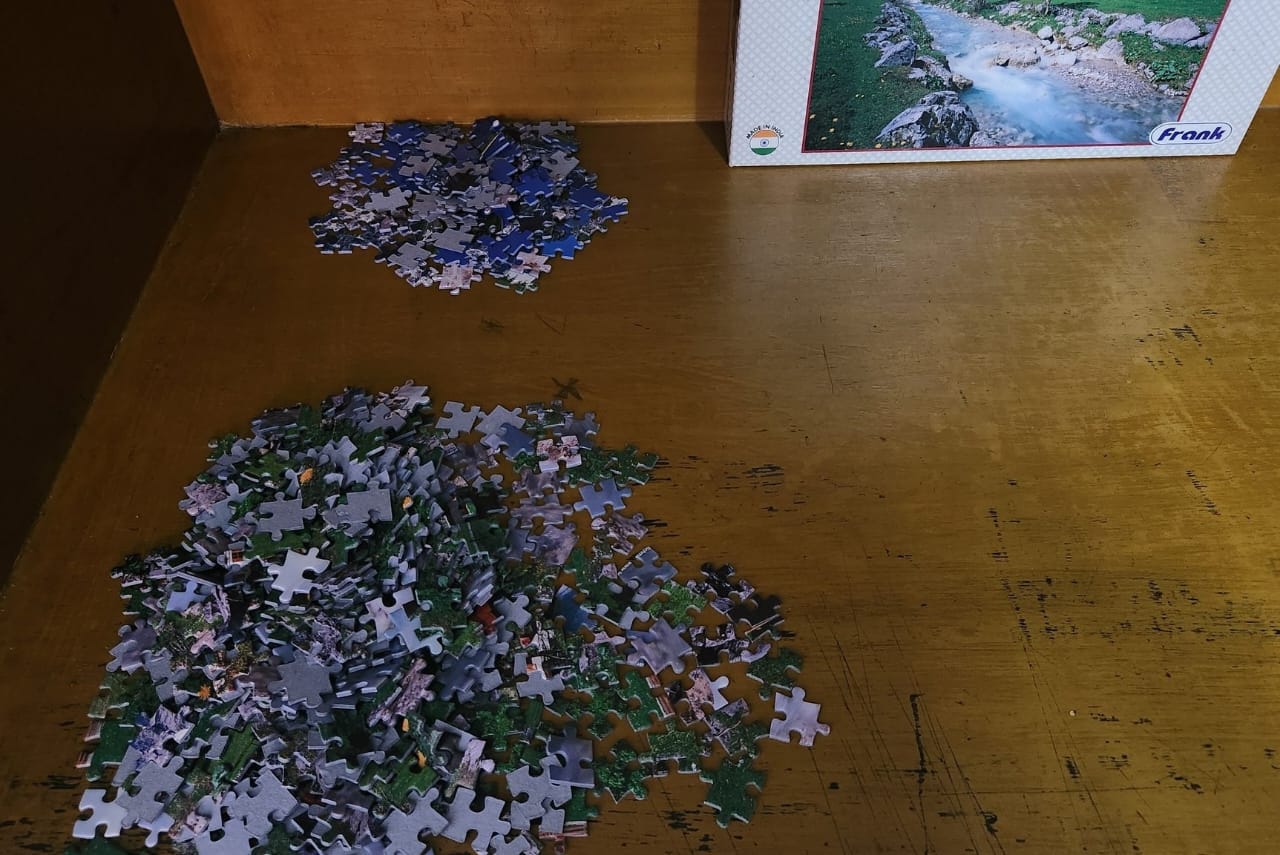Hello dear reader! I hope you’re making the best of spring before the summer heat kicks in.
I was going through some of my old essays and it was a fun ride. If you are someone who converts their thoughts and feelings into writings, I suggest it’s a good thing to revisit them once in a while. Not only does it give you a benchmark to compare your present writings with, and judge the level of improvement, it also helps you look at your past self from a more empathetic place. What I am now will always be more empathetic to what I was.
So with that in mind, I will be revisiting three of my previous essays written during mid 2022. This one was first published in June 2022.
Sometime ago, I watched a comedy special by this comedian called Daniel Sloss. I had heard a lot about it. Apparently it has made people rethink their relationships more seriously, leading to a drastic surge in breakups and divorces. Sloss even takes pride in it, asking people to tag him on social media, keeping a track of the relationships he thinks ended because of him. The special is called Jigsaw. There’s another one called Dark. Highly recommend you to watch both of them.
I love this kind of comedy. The first 45 mins of an hour long special are just shits and giggles, and in the last 15 minutes the comedian will throw some emotionally hard hitting truths that will punch you straight in the gut. It’s as if everything was just one long set-up to emotionally wreck you in the end.
In Jigsaw, Sloss recalls his childhood confusions. Once, when he was a kid, he asked his father: “what’s the meaning of life?”. Sloss' father used an analogy to give a comprehensible answer to an incomprehensible question asked by his son.
He said that our individual lives are like jigsaw puzzles. The pieces we use to build this puzzle are our life experiences and lessons we learn. The only difference is that we don’t have the box with the picture of the whole puzzle. So we don’t really know what we have to piece together. Pretty daunting if you ask me. This means that we are left to solve a mammoth puzzle without having anything to guide us.
And so we start building this puzzle by ourselves, piece by piece. We go on making it till we can find the best possible image.
When we don’t have something as a model, the best way to go about it, is to start from the four corners. These could be our family, friends, interests we have, and the work we do. A good solid start. And as we keep going, our puzzle keeps taking some definitive shape.
From what I understood, this is quite a flexible process. Because there is no one picture that we are working towards, the pieces themselves don’t have one single place. They are free to move from one place to another depending on where they fit.
Sometimes we may lose a family piece, and we’ll have to find something else to fill that space. Maybe that could be a new relationship or rekindling an old one. Or, taking on new job might might mean compromising on something you enjoyed doing because now you have something else occupying your time. It’s a continuous process, and it makes complete sense.
So now Sloss asked his father: once the corners have been built, what are we heading towards? What’s that centre piece? What is the image that we are trying to make? To which he father said, “that’s the partner piece”. One day, a perfect person will come along, who will fit right in the centre, and complete your image. Complete you, like you have never felt before.
What Sloss learnt from that is, if you don’t have a partner piece, your puzzle is incomplete, your life is incomplete. And much like Sloss, we all make the same mistake of believing that. It is because our society has been pushing us to believe that that is the truth. All the movies, songs, shows, stories, everything glorifies relationships.
Time and again we are reminded that having a partner is what completes you and we just end up believing that being with someone is better than being alone. Put it another way, being with someone is more convenient than being alone.
We are never taught to love ourselves. So we find someone who would do that for us. One day someone comes along in your life and loves you a little bit, and you get overwhelmed by it. Because the template for love is so smudged, that even a brief glimmer of it is good enough to make us believe that we have received so much love from this person.
But Sloss challenges us saying that when you love yourself 100%, you wouldn’t settle for anything less. And it is at this point, Sloss tells us about his interpretation of the Jigsaw Puzzle.
His interpretation is focused more on the relational aspect of the puzzle. That the idea of one true love, or finding a life partner is false. That we have to first learn to love ourselves before we can let someone else do that. My takeaway from this analogy was more about the experiential part of it.
The most beautiful thing about this puzzle is that we don’t know the final completed image before we start. This means that there is no single image that we have to make. So we can keep changing it as and when we like.
We can never experience life in an absolute all-or-none, right-or-wrong manner. But only in bits and pieces. In here and there, in ebbs and flows.
Sloss later learnt that when his father declared the partner piece as the main centre piece, he meant that for his own puzzle. Because he found his true love, his true purpose of life in that piece.
It doesn’t have to be that way for everyone. There is no single image, no one single set of jigsaw pieces. They change as we change. With growing life experiences we can add and remove pieces to make the image that makes us the most happy. How liberating is this idea.
This was the Jigsaw analogy as given by Daniel Sloss. The true genius of an artist lies in creating such broad yet specific metaphors, that even though they are a direct product of the artist's lived experiences, these metaphors very effortlessly become ours.
The following is my little contribution to the Jigsaw Analogy.
You know how they say it's our flaws that make us perfect. Imagine a picture made up of perfectly shaped squares pieced together. All joined neatly, line by line beside each other. But if that’s the case, I don’t think these pieces will be able to hold together for long. Because they are so perfectly shaped, they have no space for others to hold on to them, or for them to hold on to others.
Now imagine a normal incoherently shaped jigsaw piece. Those curvy edges instead of neat perfect lines. There's a piece with a side bulging in, and a piece with a side bulging out. What makes these incoherently shaped jigsaw pieces special is nothing, but their sole flaw.
That is where their beauty lies. These jigsaw pieces have the ability to hold space. And it is their imperfection which gives them this power. It is through their curves and bulges that they are able to create space for each other. Space through which they are able to hold each other together and stay strong.
We need such imperfections in our lives. If everything is perfect, life will fall apart easily. Perfection leaves room for nothing. Flaws create space. Whether be in our personal lives, our relationships, the work we do, we need to be imperfect. A friend who does not talk enough, probably needs a friend who talks a lot. Failing at a task or being unable to finish something gives the opportunity to redo it. Much like a jigsaw puzzle that stays strong all throughout, it takes a lot of time and patience to build something like that. More importantly, it takes several trials to piece it all together.
I guess what I am trying to say through my extension of Sloss' analogy is that while we are in the process of making our unique, personalized jigsaw puzzles, we must also acknowledge the uniqueness of each tiny little individual piece that makes up the entire puzzle. Each piece is imperfect in its own way. That's what keeps them strong.
After thoughts: I guess I needed to revisit this essay for some good old self motivation.
Interestingly, I have reignited my interest in puzzles, two years after fixating on that analogy. In fact, got myself a 500 piece puzzle which is still waiting for me to complete it. But having seen an actual jigsaw puzzle, the entire analogy made so much more sense.
The life experiences like the actual jigsaw pieces are very small (if you buy a 500 piece puzzle but I am guessing otherwise as well).
And even when you have a picture to work with, it is still very hard to put them together. Such is the complexity of any experience.
And it’s the imperfect shape of each piece that really makes every single one of them special, with each of them having a designated place. No matter how identical some pieces might look, they will only fit in their designated place. And when you put them in the right place, they will fit instantly, making a strong bond with their surrounding pieces. And trust me, jigsaw pieces hold each other real strong.
Funnily this experience of doing an actual jigsaw puzzle reminded of many life lessons we are always taught. Like “things take time to build”, “if it’s meant to be, it will be”, or “don’t force things”.
Very safe to conclude that Jigsaw Analogy is a very an apt and beautiful metaphor.
When Life Gives You Melon
Choose Water over Choly 🍉
Aakash xx






